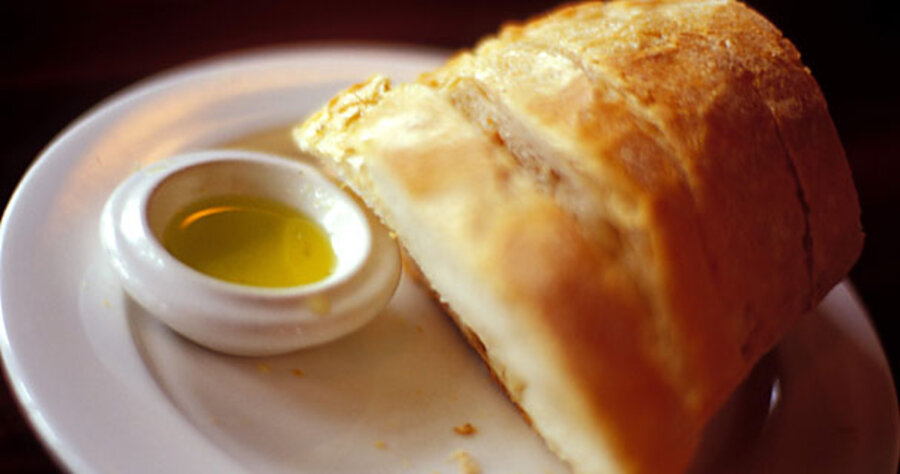Roundup: how C02 makes for lousy bread, the world's biggest solar plant, and the environmentalism of 'Star Wars'
Loading...
The New Scientist's Environment blog points to a German study that found that increased CO2 levels can make bread less dense. Higher levels of the gas disrupt the uptake of nitrogen in wheat crops, leading to decreased amounts of gluten, the study found. By 2050, dough might rise 20 percent less than it does now. Blogger Stu Hutson suggests two solutions. The first is to double the amount of nitrogen-rich fertilizer used to grow the grain, which he said would wreak massive ecological damage in the form of runoff into waterways. The other is to use genetically modified crops that produce high gluten levels. He doesn't mention a third option, which is to reduce CO2 emissions.
The Knight Science Journalism Tracker digs up a couple stories about the relationship between climate change and storm intensity. University of Michigan atmospheric and planetary scientist Nilton Renno developed a model that shows that for every 3.6 degrees F. that the Earth's surface temperature warms, the intensity of storms could increase by at least a few percentage points. But the KSJ Tracker also found a story from the Ottawa Citizen about an NOAA study that found that increased temperatures cause strong crosswinds that can shear the tops off of hurricanes, reducing their intensity.
The San Francisco Chronicle reports on the announcement of the biggest US solar power plant, naturally in the Sunshine State. The SunPower Corp. photovoltaic plant, which will be built in Florida's DeSoto County, is projected to generate enough electricity to power 18,750 homes.
The Telegraph, a British daily, reports that President Bush ended a private meeting with G-8 leaders in Japan with the words, "Goodbye from the world's biggest polluter." According to the Telegraph, the president "then punched the air while grinning widely, as the rest of those present including Gordon Brown and Nicolas Sarkozy looked on in shock."
Earthfirst has a post titled Galactic Green Cred: The Environmentalism of 'Star Wars,' in which they examine the environmental message in George Lucas's space saga (just the original trilogy, thank you very much). They look at the merits of Uncle Owen and Aunt Beru's energy-efficient home on Tatooine, their meals that seem to consist of nothing but bok choy and blue milk, the monster in the trash compactor, and the Jawas, whom they refer to as "Recycling Freegan Gods."
It's a great post, but they left out a few things, namely, Tatooine's moisture-farming machines (they now have real-life versions), Luke's cruel hobby of gunning down womp rats from the comfort of his Skyhopper, the Empire's standard procedure of dumping garbage into space, the radiation hazard faced by the poor schlubs who have to stand right next to the Death Star laser as it fires, and the fact that the Death Star's ultimate downfall was its exhaust vent. Serves them right for having a tailpipe, I say. And for blowing up a planet.





